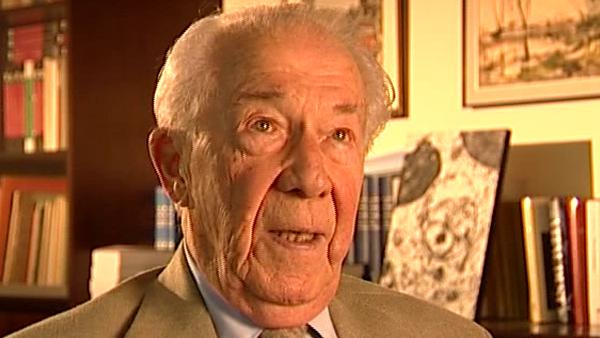NEXT STORY

A passion for bioenergetics
RELATED STORIES

NEXT STORY

A passion for bioenergetics
RELATED STORIES


|
Views | Duration | |
|---|---|---|---|
| 41. The sixth enzyme: Uricase | 157 | 04:50 | |
| 42. The discovery of lysosomes | 1 | 447 | 02:32 |
| 43. A passion for bioenergetics | 128 | 03:06 | |
| 44. Uptake and digestion in lysosomes | 132 | 04:10 | |
| 45. Autophagy: Self-eating by cells | 257 | 03:04 | |
| 46. 'Suicide bags': Lysosomes in pathology | 140 | 02:15 | |
| 47. Pathological implications: Osteoclasts and osteoblasts | 95 | 03:12 | |
| 48. Pathological implications: The work of Géry Hers | 97 | 02:32 | |
| 49. Glycogen storage diseases: Géry Hers and Gerty Cori | 131 | 04:46 | |
| 50. Glycogen storage diseases: Autophagy | 116 | 02:30 |


And so that was the discovery of lysosomes, which I have tried to explain, and the paper was published in August 1955 in the Biochemical Journal by de Duve, Pressman, Gianetto, Appelmans and Wattiaux. Now this is one of the only papers in which I put my name first. Because most of the papers published from my group, I always put my name at the end and gave first authorship to the students or the co-workers who'd done the most important work. But in this paper, I remember clearly discussing with my... with my colleagues, and I said, 'Well, I think I have to take responsibility because this is... this is putting ourselves on a limb, and I... I think I want to...' Frankly, I think I'm being honest in saying that. I wasn't trying to take the credit; I just wanted to say, 'Well, this is a risky thing... this is a thing that I'm responsible for', and so I put my name first. That was the lysosome. And just a word about the uricase. In the original paper we said either uricase is in the membrane of the lysosomes, which explains why it is not latent and does not have an acid pH optimum – because I forgot to mention this, of course: the digestive particles were supposed to act... to have an acid inside because all those enzymes required acid, so they were like the cell's stomach, they... they had an acid juice inside... a digestive juice inside. Well, anyway... so with either uricase belongs to the membrane or it belongs to yet another particle that... that has similar sedimentation properties, so it cannot be separated from the lysosomes by sedimentation. Well, I think I will come... come back to that later, because that was, of course, the major second discovery that we made, but in the meantime a little more should be said about the lysosomes.
Belgian biochemist Christian de Duve (1917-2013) was best known for his work on understanding and categorising subcellular organelles. He won the Nobel Prize in Physiology or Medicine in 1974 for his joint discovery of lysosomes, the subcellular organelles that digest macromolecules and deal with ingested bacteria.
Title: The discovery of lysosomes
Listeners: Peter Newmark
Peter Newmark has recently retired as Editorial Director of BioMed Central Ltd, the Open Access journal publisher. He obtained a D. Phil. from Oxford University and was originally a research biochemist at St Bartholomew's Hospital Medical School in London, but left research to become Biology Editor and then Deputy Editor of the journal Nature. He then became Managing Director of Current Biology Ltd, where he started a series of Current Opinion journals, and was founding Editor of the journal Current Biology. Subsequently he was Editorial Director for Elsevier Science London, before joining BioMed Central Ltd.
Tags: August 1955, Biochemical Journal, Robert Gianetto, Berton Pressman, Françoise Appelmans, Robert Wattiaux
Duration: 2 minutes, 32 seconds
Date story recorded: September 2005
Date story went live: 24 January 2008